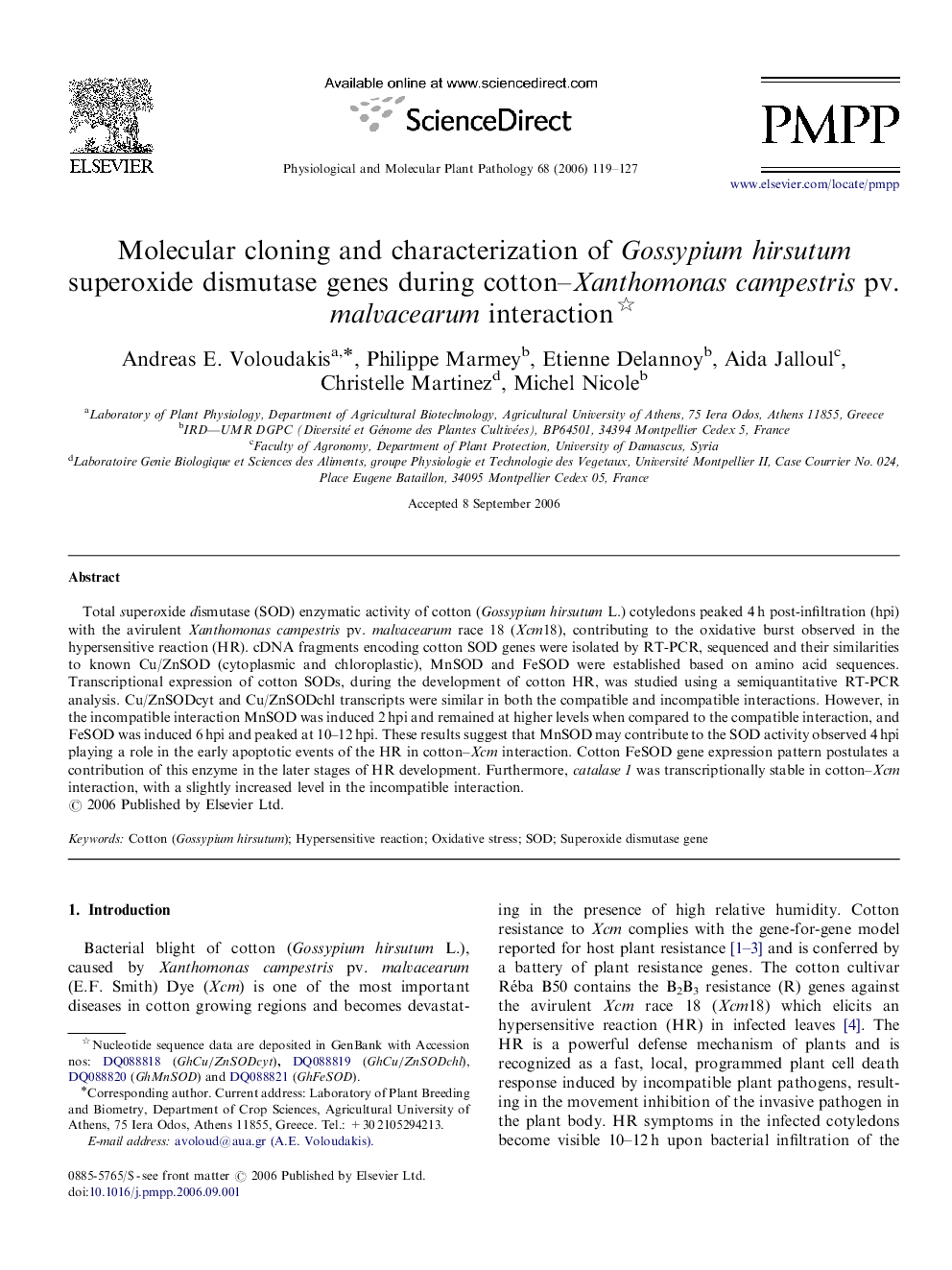| Article ID | Journal | Published Year | Pages | File Type |
|---|---|---|---|---|
| 2836774 | Physiological and Molecular Plant Pathology | 2006 | 9 Pages |
Total superoxide dismutase (SOD) enzymatic activity of cotton (Gossypium hirsutum L.) cotyledons peaked 4 h post-infiltration (hpi) with the avirulent Xanthomonas campestris pv. malvacearum race 18 (Xcm18), contributing to the oxidative burst observed in the hypersensitive reaction (HR). cDNA fragments encoding cotton SOD genes were isolated by RT-PCR, sequenced and their similarities to known Cu/ZnSOD (cytoplasmic and chloroplastic), MnSOD and FeSOD were established based on amino acid sequences. Transcriptional expression of cotton SODs, during the development of cotton HR, was studied using a semiquantitative RT-PCR analysis. Cu/ZnSODcyt and Cu/ZnSODchl transcripts were similar in both the compatible and incompatible interactions. However, in the incompatible interaction MnSOD was induced 2 hpi and remained at higher levels when compared to the compatible interaction, and FeSOD was induced 6 hpi and peaked at 10–12 hpi. These results suggest that MnSOD may contribute to the SOD activity observed 4 hpi playing a role in the early apoptotic events of the HR in cotton–Xcm interaction. Cotton FeSOD gene expression pattern postulates a contribution of this enzyme in the later stages of HR development. Furthermore, catalase 1 was transcriptionally stable in cotton–Xcm interaction, with a slightly increased level in the incompatible interaction.
